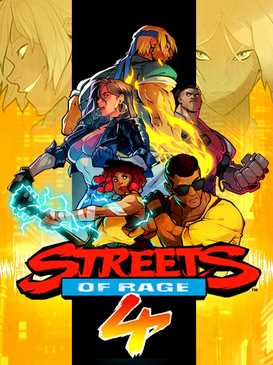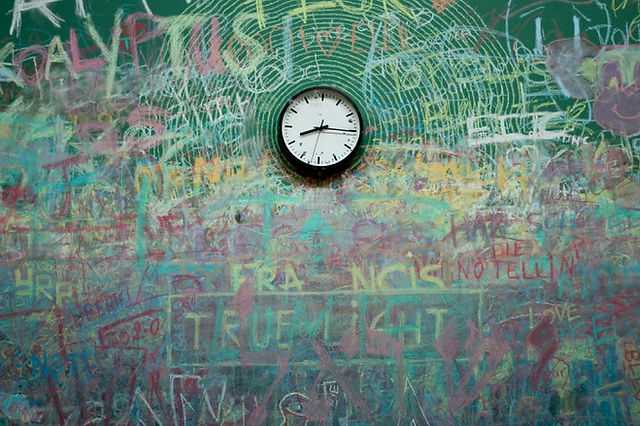Streets of Rage 4, the highly anticipated beat ’em up game, not only brings back the classic gameplay and characters that fans know and love, but also embraces the nostalgia of 90s fighting games through its stunning retro street art. With vibrant colors and detailed designs, the artwork in Streets of Rage 4 pays homage to the golden age of arcade gaming, making players feel like they’ve stepped into a time capsule.
One of the standout features of Streets of Rage 4 is its commitment to preserving the essence of the original trilogy, while giving it a modern twist. The developers have enlisted some of the most talented street artists to create the game’s visuals, resulting in a unique and visually striking experience. Each character is brought to life with meticulous attention to detail, from their distinctive fighting styles to their iconic outfits, making them instantly recognizable to fans of the series.
The retro street art in Streets of Rage 4 not only captures the spirit of the original games, but also adds a layer of authenticity and charm to the overall aesthetic. The graffiti-covered walls, neon-lit streets, and vibrant backdrops transport players back to the gritty urban environments of the 90s. With every punch and kick, the art comes alive, immersing players in a world where street justice reigns supreme.
While Streets of Rage 4 pays tribute to the past, it also introduces new elements that push the boundaries of the genre. By blending old-school gameplay mechanics with modern visuals, the game offers a fresh take on the beat ’em up genre. The retro street art serves as a visual reminder that Streets of Rage 4 is not just a mere sequel, but a love letter to the classic arcade era.
The Streets of Rage series is renowned for its iconic pixelated art style, which has evolved and improved over the years. Starting with the original game released in 1991, the series set the standard for beat ’em up games and defined the genre’s visual aesthetic.
In the first Streets of Rage game, the pixel art was simple and limited by the hardware capabilities of the Sega Genesis. Despite its limitations, the game’s art showcased vibrant and detailed character designs, each with their unique fighting styles and moves. The pixelated environments were filled with color and life, with each stage offering its own distinct atmosphere.
As the series progressed with Streets of Rage 2 in 1992, the pixel art saw significant improvement. The character sprites became larger and more detailed, allowing for smoother animations and enhanced visual effects. The backgrounds became more immersive, with dynamic elements and interactive objects that added gameplay depth. The pixel art in Streets of Rage 2 pushed the boundaries of what was possible on the Genesis hardware, setting a new benchmark for the series.
In Streets of Rage 3, released in 1994, the pixel art continued to evolve, showcasing even more intricate character designs and stunning backgrounds. The game introduced new playable characters, each with their unique graphical style and moveset. The pixelated visuals were enhanced with additional layers of detail and improved shading techniques, giving the game a more polished and refined appearance.
With the release of Streets of Rage 4 in 2020, the series made a triumphant return after a long hiatus. The game’s pixel art stayed true to the series’ roots while incorporating modern techniques and influences. The character sprites were meticulously crafted with attention to detail, offering a seamless blend of nostalgic pixel art and contemporary design elements. The backgrounds were beautifully hand-drawn, immersing players in a vibrant and richly detailed world.
Exploring the Iconic Art Style of Streets of Rage 4
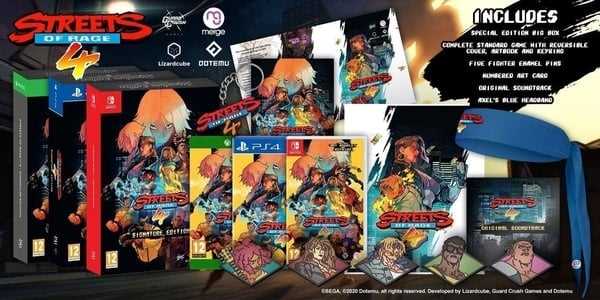
Streets of Rage 4, the latest installment in the famous beat ’em up series, has captivated fans with its vibrant and nostalgic art style that pays homage to the original games while introducing modern elements.
The game’s art direction is a seamless blend of retro pixel art and hand-drawn animations, giving it a unique and eye-catching look. Each character and enemy is meticulously crafted, with detailed sprites that harken back to the glory days of the genre. The backgrounds are rich and lively, showcasing the gritty urban landscapes that define the Streets of Rage universe.
One of the standout features of Streets of Rage 4’s art style is its use of vibrant colors and lighting effects. The neon lights of the city streets and the glow of explosions create a dynamic and visually striking experience. Combined with the fast-paced action and fluid animations, the art style immerses players in the intense world of street brawling.
The art style also extends to the game’s UI design, with retro-inspired menus and HUD elements that evoke nostalgia for classic arcade games. Each character is given a distinct visual personality through their sprites and animations, showcasing their unique fighting abilities and personalities.
Furthermore, the art style of Streets of Rage 4 reflects the game’s overall theme of nostalgia and homage to its predecessors. By staying true to the original series while introducing modern elements, the game resonates with longtime fans while also attracting new players.
Street Art: Channeling the Action and Rage of the Game
Street art has always been a powerful medium for self-expression, capturing the essence and energy of urban life. In the case of Streets of Rage 4, the artistic style employed channels the action and rage of the game, bringing it to life in a vibrant and dynamic way.
From the moment you encounter a piece of street art in the game, you can feel the energy surging through the visuals. The bold lines, vibrant colors, and intricate details all work together to create an atmosphere that mirrors the intense fighting gameplay.
One aspect that stands out in the street art of Streets of Rage 4 is its retro feel. The art style pays homage to the classic beat ’em up games of the past, with its pixelated character designs and graffiti-like backgrounds. This retro aesthetic not only adds to the nostalgia factor but also reinforces the connection between the game and its roots.
Additionally, the street art in the game helps to elevate the overall experience by immersing players in the world of Streets of Rage 4. The detailed backgrounds and vibrant visuals create a sense of depth, making the locations feel alive and bustling with activity. As you make your way through the streets, the art serves as a backdrop that enhances the atmosphere and heightens the intensity of the gameplay.
Moreover, the street art of Streets of Rage 4 adds an extra layer of storytelling to the game. Each piece of art tells a story, whether it’s depicting a fallen hero or a graffiti tag symbolizing rebellion. These visual narratives not only add depth to the game’s world but also provide players with a glimpse into the emotions and motivations that drive the characters.
Overall, street art plays a crucial role in Streets of Rage 4, channeling the action and rage of the game into every visual element. It captures the energy of urban life, adds a nostalgic touch, immerses players in the game world, and tells its own story. Through its unique artistic style, Streets of Rage 4 proves that street art is not just an aesthetic element, but a powerful medium that enhances the gaming experience.
Reviving the Retro Vibe: The Importance of Pixel Art in Streets of Rage 4
Pixel art has played a significant role in the evolution of video games, and it continues to captivate players with its nostalgic charm. Streets of Rage 4, the long-awaited sequel to the classic beat ’em up series, embraces this retro aesthetic, reviving the pixel art style that defined the genre’s golden age.
In Streets of Rage 4, every frame of animation is meticulously crafted pixel by pixel, paying homage to the 16-bit era that birthed the original games. The attention to detail in the character sprites, backgrounds, and special effects is a testament to the dedication of the development team in preserving the essence of the series.
Pixel art not only serves as a visual treat for fans of the genre, but it also has functional implications for the gameplay mechanics. The limited resolution of pixels forces designers to convey information in a concise and understandable manner, resulting in clear and readable visuals that enhance player experience.
Furthermore, the pixel art style in Streets of Rage 4 allows for smooth animations and precise control responsiveness. Each punch, kick, and special move feels satisfyingly impactful, thanks to the painstaking efforts to create fluid and dynamic sprite animations.
The game’s pixel art extends beyond the character designs, with the environments and backgrounds showcasing intricate details and vibrant colors. From the neon-lit streets to the seedy nightclubs, each stage in Streets of Rage 4 is a visual feast, transporting players back to the gritty urban settings of the original games.
Streets of Rage 4 proves that pixel art has a timeless appeal and can still hold its own in the modern gaming landscape. By embracing this retro aesthetic, the developers have managed to capture the essence of the series while introducing new features and mechanics. It serves as a reminder of the impact and lasting influence that pixel art continues to have on the industry.
Expressing Creativity Through Street Art in Streets of Rage 4
In the world of video games, one of the most prominent ways to express creativity is through stunning visual art. Streets of Rage 4, a modern take on the classic fighting game series, is a prime example of how street art can be used to create an immersive and visually captivating experience.
Bringing Retro Vibes to Life
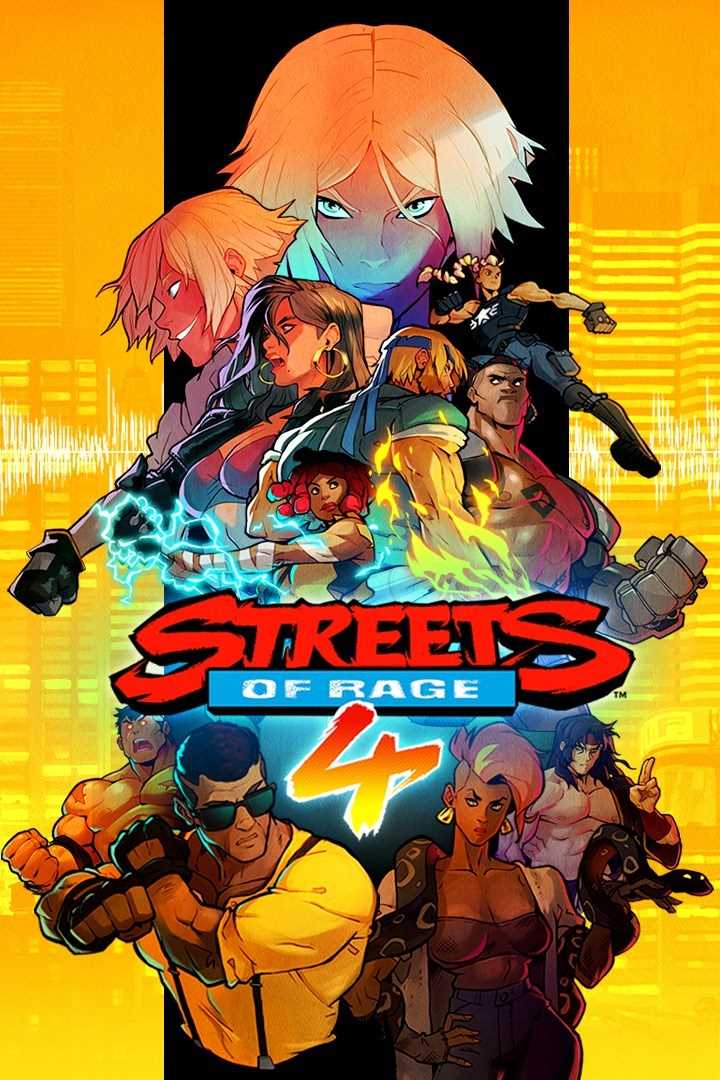
One of the defining features of Streets of Rage 4 is its retro street art style, which pays homage to the classic arcade games of the past. The developers have gone to great lengths to recreate the look and feel of the original games, with vibrant graffiti scattered throughout the game’s environments.
The street art in Streets of Rage 4 is not just for show – it serves a purpose in the game’s narrative and world-building. Each piece of graffiti tells a story, whether it’s a warning to the player, a clue to a hidden secret, or a piece of lore that adds depth to the game’s rich mythology.
A Collaborative Effort
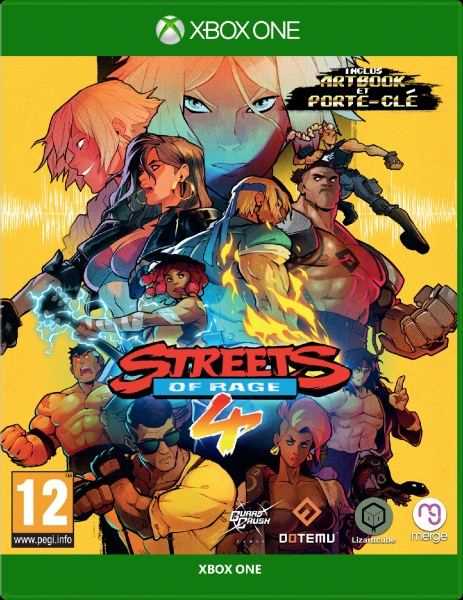
The street art in Streets of Rage 4 is not the work of a single artist, but a collaboration between a team of talented individuals. From concept artists to 3D modelers to texture artists, each person involved in the creation of the game’s art brings their own unique style and vision to the table.
This collaborative approach allows for a diverse range of street art styles to be featured in the game, from bold and abstract designs to realistic and detailed renderings. The result is a visually stunning game that feels alive and full of energy, with each piece of street art adding to the overall atmosphere and aesthetic.
Embracing the Spirit of Street Art
Street art has always been a powerful form of expression, often used to convey social and political messages. In Streets of Rage 4, the street art not only adds visual flair to the game, but also serves as a way for the developers to communicate their own ideas and messages.
Whether it’s a call for unity, a reflection on societal issues, or a celebration of the game’s rich history, the street art in Streets of Rage 4 is a powerful tool for the developers to connect with players on a deeper level. It encourages players to think critically about the world they’re exploring and to engage with the game’s themes on a more personal level.
| Game | Genre | Release Date |
|---|---|---|
| Streets of Rage 4 | Fighting | April 30, 2020 |
The Impact of Street Art in the Streets of Rage 4 Community
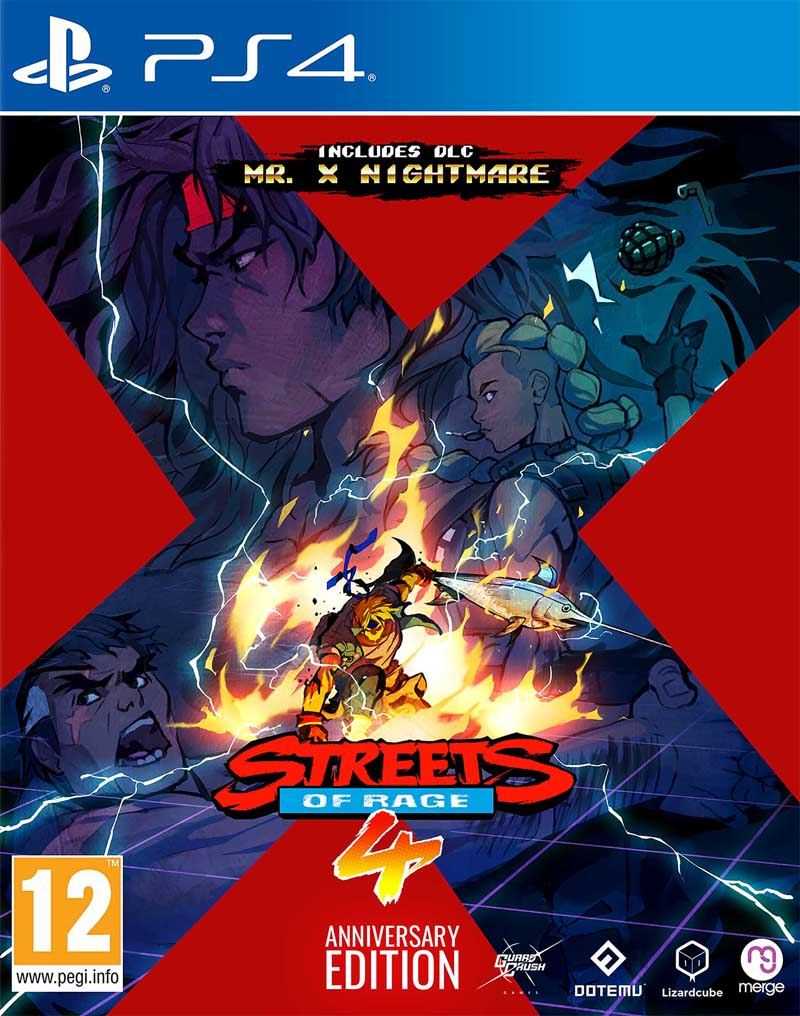
Street art plays a significant role in the Streets of Rage 4 community, bringing a sense of nostalgia, creativity, and community engagement. With its vibrant and expressive visuals, street art not only enhances the overall aesthetic of the game but also creates a unique connection with players.
One of the primary impacts of street art in the Streets of Rage 4 community is its ability to evoke a sense of nostalgia. The game itself is a tribute to the classic beat ’em up genre that was popular in the 1990s. The inclusion of street art in the game’s visuals reminds players of the era when these types of games were at the peak of their popularity. This nostalgia not only appeals to older fans of the genre but also introduces a new generation of players to its roots.
In addition to nostalgia, street art also brings a level of creativity to the game. The hand-drawn art style used in Streets of Rage 4, inspired by the classic games, is complemented by the inclusion of street art. The graffiti and murals found throughout the game’s environment not only serve as visual elements but also tell a story. They provide clues and hints to the game’s lore and add depth to the overall experience.
Furthermore, street art creates a sense of community engagement within the Streets of Rage 4 community. Players often share their favorite street art pieces they discover while playing the game, discussing their interpretations and significance. This engagement fosters a connection between players, allowing them to come together and appreciate the artwork that enhances their gaming experience.
Overall, street art has a significant impact on the Streets of Rage 4 community. It ignites nostalgia, enhances creativity, and fosters community engagement. With its vibrant visuals and meaningful storytelling, street art has become an integral part of the game, adding depth and an extra layer of enjoyment for players.
Unveiling the Artistic Inspirations Behind Streets of Rage 4
Streets of Rage 4, the long-awaited sequel to the classic beat ’em up series, not only brings back the beloved gameplay and characters, but also pays homage to the artistic styles that defined the genre. The game’s art direction is heavily influenced by the retro street art of the 90s, capturing the essence of the era while giving it a modern twist.
The development team behind Streets of Rage 4 drew inspiration from various sources to create the game’s unique art style. Street artists like Keith Haring and Jean-Michel Basquiat, known for their bold and vibrant works, served as a major influence. The game’s hand-drawn characters and environments feature exaggerated proportions and dynamic poses, reflecting the energy and attitude of street art.
Combining Nostalgia with Modernity
The art team carefully blended the nostalgic elements of the original Streets of Rage games with contemporary aesthetics. They took cues from comic books, anime, and graffiti art to create a visual language that feels both familiar and fresh. The use of strong lines, vivid colors, and expressive forms adds a sense of excitement and intensity to the game’s visuals.
Each playable character in Streets of Rage 4 is meticulously designed to capture their unique personality and fighting style. From the muscular physique of Axel Stone to the agile and acrobatic moves of Blaze Fielding, the art brings out the essence of each character, making them instantly recognizable to fans of the series.
A Modern Classic
With Streets of Rage 4, the developers aimed to create a game that not only appeals to long-time fans of the series but also introduces a new generation to the joy of old-school beat ’em ups. The art plays a crucial role in achieving this goal, as it serves as a visual bridge between the past and the present.
Streets of Rage 4’s art embraces the nostalgia of the fighting game genre while injecting it with a contemporary flair. It is a celebration of the visual styles that defined an era, paying tribute to the artistic inspirations that made the series a beloved classic.

I am a mural enthusiast and a fervent admirer of street art. Rather than creating murals myself, I am passionate about collecting them. My love for street art knows no bounds. I am dedicated to curating and cherishing these artworks that grace the streets. My collection stands as a testament to my profound appreciation for this form of artistic expression.
read about me

